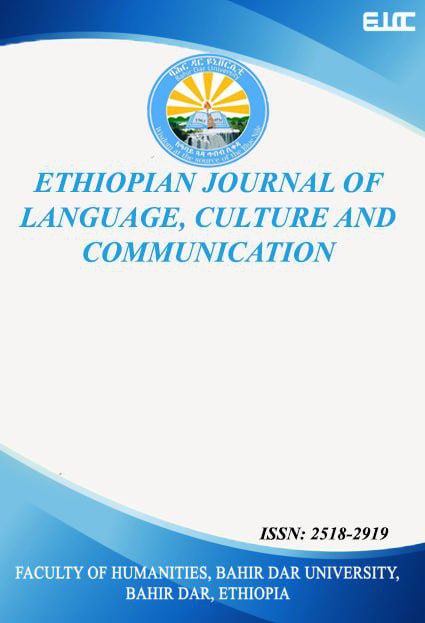An investigation of a potential difference between EFL teachers’ teaching strategies and learners’ EFL learning styles at grades 11 and 12
Abstract
The present study was conducted to examine teachers’ teaching strategies, their students’ learning styles and to examine a possible difference between the two groups at Aferewanat Preparatory and Secondary School in Dera District, South Gondar. Descriptive survey design was mainly used to assess the teaching strategies and learning styles at the same school. The participants in this study were 170 grades 11 &12 students and 5 EFL teachers teaching these students. Simple random sampling technique was used to select the school and the sections of the students, but for teachers, comprehensive sampling. Data were collected through questionnaire, classroom observation and semi-structured interview. Independent sample T-test and frequency counts were used to analyze the quantitative data, while the qualitative data were analyzed by narration and description of the respondents’ ideas. The finding of the study showed that visual style is the learning style of the majority of students, while Note & Lecture and Pair Work & Group Discussion were the most dominant teaching strategies used by teachers. Besides, there were no statistically significant differences between the teachers’ visual and auditory-oriented teaching strategies and students’ visual and auditory style categories. However, there was statistically significant difference between kinaesthetic type of teaching strategies and kinaesthetic learning styles as could also be noticed from the observation and the interview. Hence, based on the findings of this study, it’s recommended that teachers should vary their teaching strategies in line with the VAK modalities in every period in order to meet the learning styles of their students.
Authors who publish with this journal agree to the following terms:
- Authors retain copyright and grant the journal right of first publication with the work simultaneously licensed under a Creative Commons Attribution License that allows others to share the work with an acknowledgement of the work's authorship and initial publication in this journal.
- Authors are able to enter into separate, additional contractual arrangements for the non-exclusive distribution of the journal's published version of the work (e.g., post it to an institutional repository or publish it in a book), with an acknowledgement of its initial publication in this journal.
- Authors are permitted and encouraged to post their work online (e.g., in institutional repositories or on their website) prior to and during the submission process, as it can lead to productive exchanges, as well as earlier and greater citation of published work (See The Effect of Open Access).


